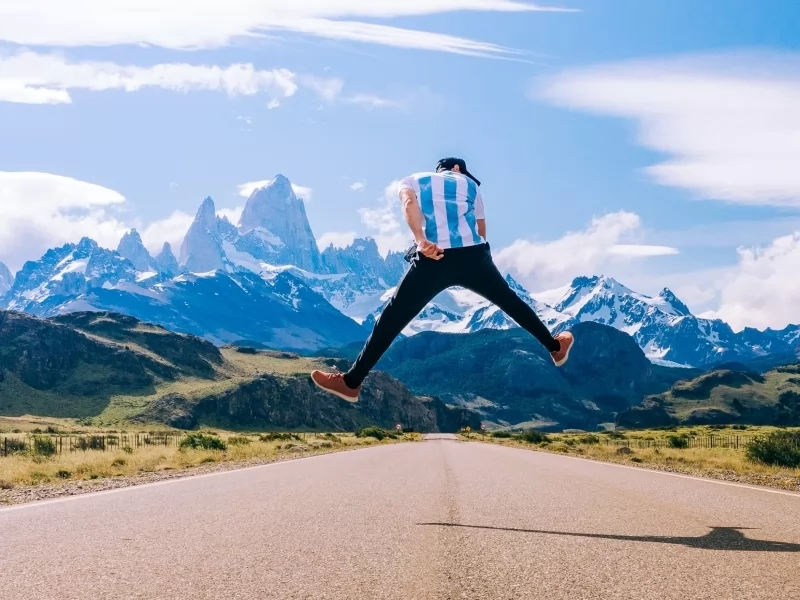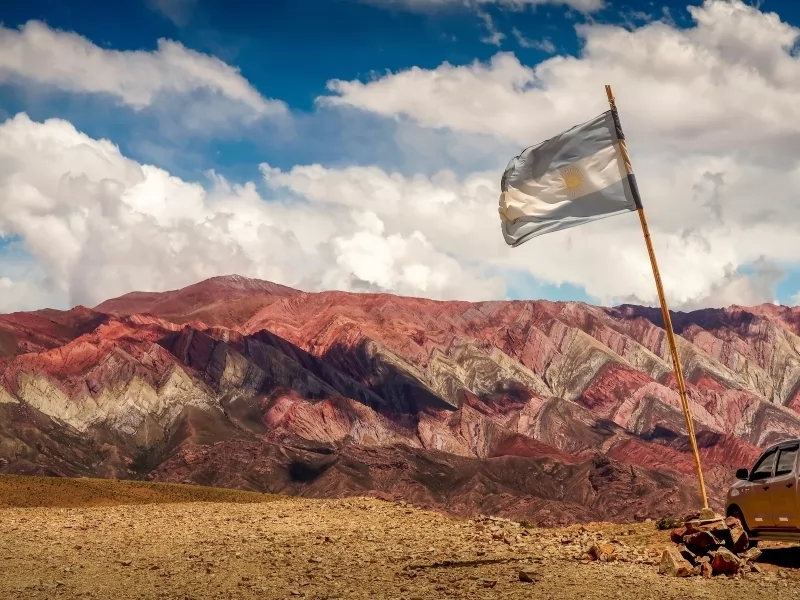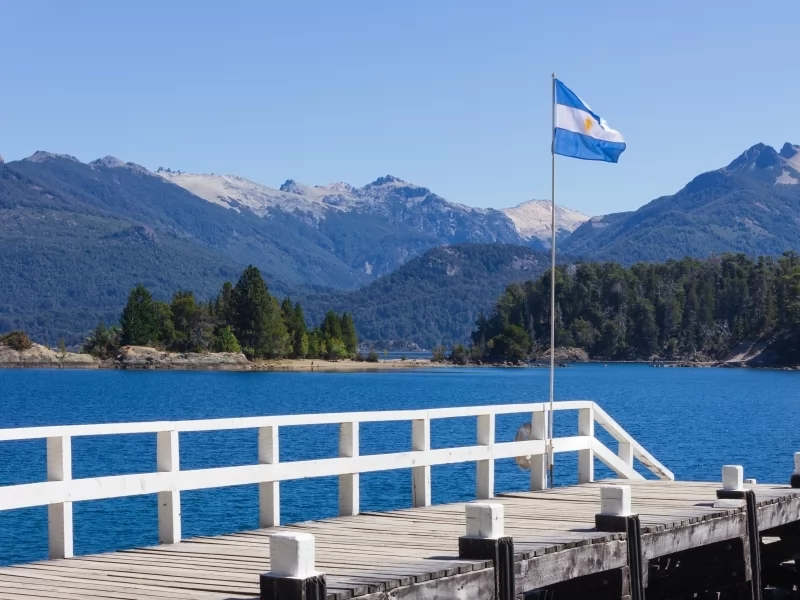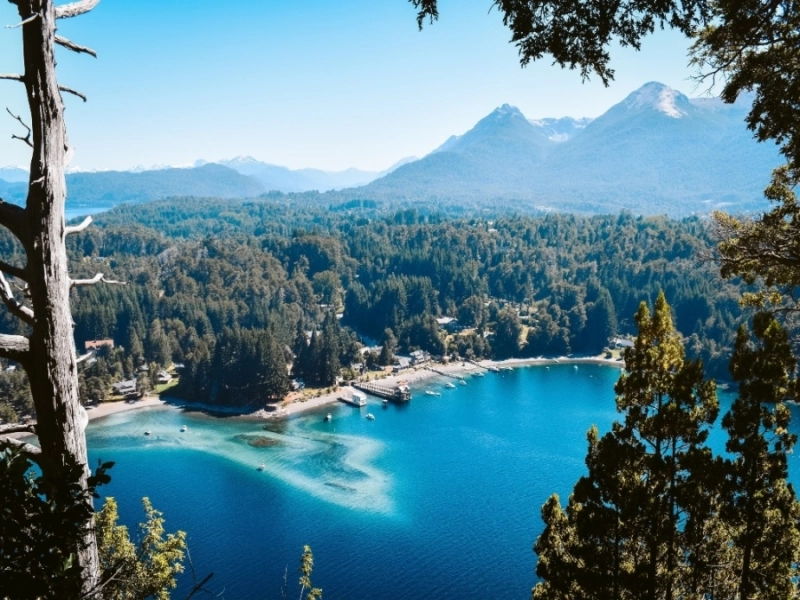News and Testimonials

Argentina's best road trips promise adventure
With its vast open spaces, dramatic and diverse scenery, and endless highways, Argentina is an ideal place for a road trip. Hiring a car allows you to escape the crowds, explore at your own pace and visit remote areas that would otherwise be out of reach.
Although Argentina’s main highways are generally paved, you can expect gravel and potholes on many minor roads, particularly in the south, though this just adds to the adventure. Roads off the beaten track are best tackled in spring or summer, avoiding the bitter cold and snows of the South American winter.
Whether you’re looking for legendary routes such as the Pan-American Highway or little-known back roads through the wilds, Argentina has you covered. Here are five of our favorite road trips.
Ruta 40
Best epic adventure
Cabo Virgenes–La Quiaca; 5,224km (3,246 miles); allow three to five weeks
Argentina’s answer to Route 66, Ruta 40 is one of the world’s longest roads, stretching almost the entire length of Argentina. Also known as RN40, Ruta Nacional Cuarenta or simply La Cuarenta (“The Forty”), it starts in the far south in Cabo Virgenes, a windswept settlement on the Strait of Magellan, and finishes in the extreme northwest in the town of La Quiaca, which sits at a breathless 3,442m (11,293ft) above sea level on the Bolivian border.
Between these two outposts, the highway traces the Andes, passing through 11 Argentinian provinces and scores of stunning landscapes, from vast canyons and mountain passes to temperate rainforests and lush vineyards.
The quietest, and perhaps most atmospheric, section of the road runs from El Calafate, a touristy town on the edge of Parque Nacional Los Glaciares, to the city of Bariloche in the Argentinian Lake District. For most of this leg of the journey, you'll largely have the road to yourself, with snowy Andean peaks to the west and the seeming endless Patagonian steppe to the east.
Best driven by experienced motorists in the spring or summer, Ruta 40 is now mostly paved, but it is useful to have a 4WD, particularly if you plan to explore some of the gravel roads (known locally as ripio) that branch off into remote areas of Patagonia.
Pan-American Highway
Best long-range road trip
Mendoza–Ushuaia; 3,300km (2,051 miles); allow two to four weeks
A network of interconnected routes snaking right down through the Americas, from northern Alaska to Tierra del Fuego, the 3,000km (19,000 mile) Pan-American Highway is, quite simply, the world’s finest road trip. And the Argentine – and southernmost – section is a highly memorable drive that takes in many of the country’s highlights.
It starts in Mendoza province, the heart of the country’s famed wine industry, before heading east to the bright lights of the capital, Buenos Aires. Beyond the sprawling suburbs, you continue south, skirting the fertile grasslands of the Pampas, tracing the Atlantic coast, and then arrowing through sparsely populated Patagonia.
When you reach the far south, you cut into Chile and take a ferry across the Strait of Magellan (alongside the impenetrable jungles of the Darién Gap, dividing Panama from Colombia, this is the only part of the Pan-American Highway that cannot be driven). It’s then a relatively short drive to the city of Ushuaia, where ubiquitous signs let you know you’ve reached El Fin del Mundo (“The End of the World”).
Although Argentina’s part of the Pan-American Highway can be driven year-round, the bitterly cold, snowy and windy winters in southern Patagonia and Tierra del Fuego mean a summer or spring journey is the best bet. It’s also important to make sure your car-rental agreement and insurance allows you to cross into Chile (you may have to pay an extra fee).
Cuesta del Obispo route
Best mountain views
Salta–Cachi; 160km (99 miles); allow 1-2 days
This drive from the charming city of Salta to the tranquil town of Cachi showcases the dramatic mountainous landscapes of Argentina’s northwest. Heading southwest from Salta along RP33 – a provincial, largely paved road – the route travels through the sunny Calchaquí Valley region, which is carpeted with high-altitude vineyards and dotted with clusters of attractive adobe houses.
The route then continues up a precipitous mountain pass known as the Cuesta del Obispo (“Bishop’s Slope”), which features a dizzying series of switchback turns, before dropping into Parque Nacional Los Cardones, named for the tall cacti that stud this desert-like area. Check the weather forecast before setting out along the Cuesta del Obispo route, as heavy rain can make it impassable.
Cachi itself has a beautiful setting, encircled by snowy peaks and within striking distance of several wineries. Although you can head back to Salta the same day, it’s well worth spending the night here, not least so you can enjoy a few glasses of the region’s signature torrontés – an aromatic, peach-fragranced white wine – while soaking up the views.
Camino de la Historia
Best historic drive
Córdoba–Cerro Colorado; 170km (106 miles); allow 2-3 days
Often overlooked by travelers, Córdoba province provides a fascinating insight into the indigenous peoples who originally inhabited this area, as well as the Spanish colonists who came later. Starting in the city of Córdoba – founded in 1573 and known for its rich cultural scene – the first section of the RN9 highway has been dubbed the Camino de la Historia (“Historical Route”).
The road follows the colonial-era Camino Real del Perú (“Royal Road of Peru”), which once ran from Lima, capital of modern-day Peru, to Buenos Aires via the legendary silver mines of Potosí, in present-day Bolivia.
On the way, you'll pass the evocative estancias (ranches) of Jesús María and Santa Catalina, which were built by Jesuit missionaries, who dominated the region in the 17th and 18th centuries and had a devastating impact on the area's indigenous inhabitants. Centered around striking whitewashed churches, the estancias – listed as Unesco World Heritage sites – offer museums and guided tours that lead visitors through this complicated history.
Meanwhile, at the end of the Camino de la Historia, a collection of caves and mountain slopes near the pretty village of Cerro Colorado is covered by some of Argentina’s most beautiful petroglyphs. Created up to 1,000 years ago, they depict humans and animals, scenes from everyday life, and abstract shapes and figures, providing a snapshot of a long-lost world.
Ruta de los Siete Lagos
Best scenic drive
San Martín de los Andes–Villa La Angostura; 110km (68 miles); allow 1-2 days
Gorgeous landscapes reminiscent of the Alps, numerous options for side trips, plenty of places to grab a bite to eat or stay the night – with perks like this, a leisurely drive along the Ruta de los Siete Lagos (“Seven Lakes Route”) is hard to beat.
Connecting the tourist hubs of San Martín de los Andes and Villa La Angostura, the drive follows Ruta 40 through two national parks – Lanín and Nahuel Huapi – which span a particularly picturesque swathe of the Argentinian Lake District.
As you’d expect given the name, the highlights of the route are the seven eponymous lagos, which are lined with beaches, surrounded by dense forests and watched over by snowy mountains and volcanoes. Their crystal-clear waters are ideal for swimming, kayaking or stand-up paddleboarding, though it may be hard to tear yourself away from the sublime views.
As snow can block off parts of the road during the winter, the Ruta de los Siete Lagos is best driven in the spring, summer or early autumn.
Source: https://www.lonelyplanet.com/articles/best-road-trips-in-argentina







